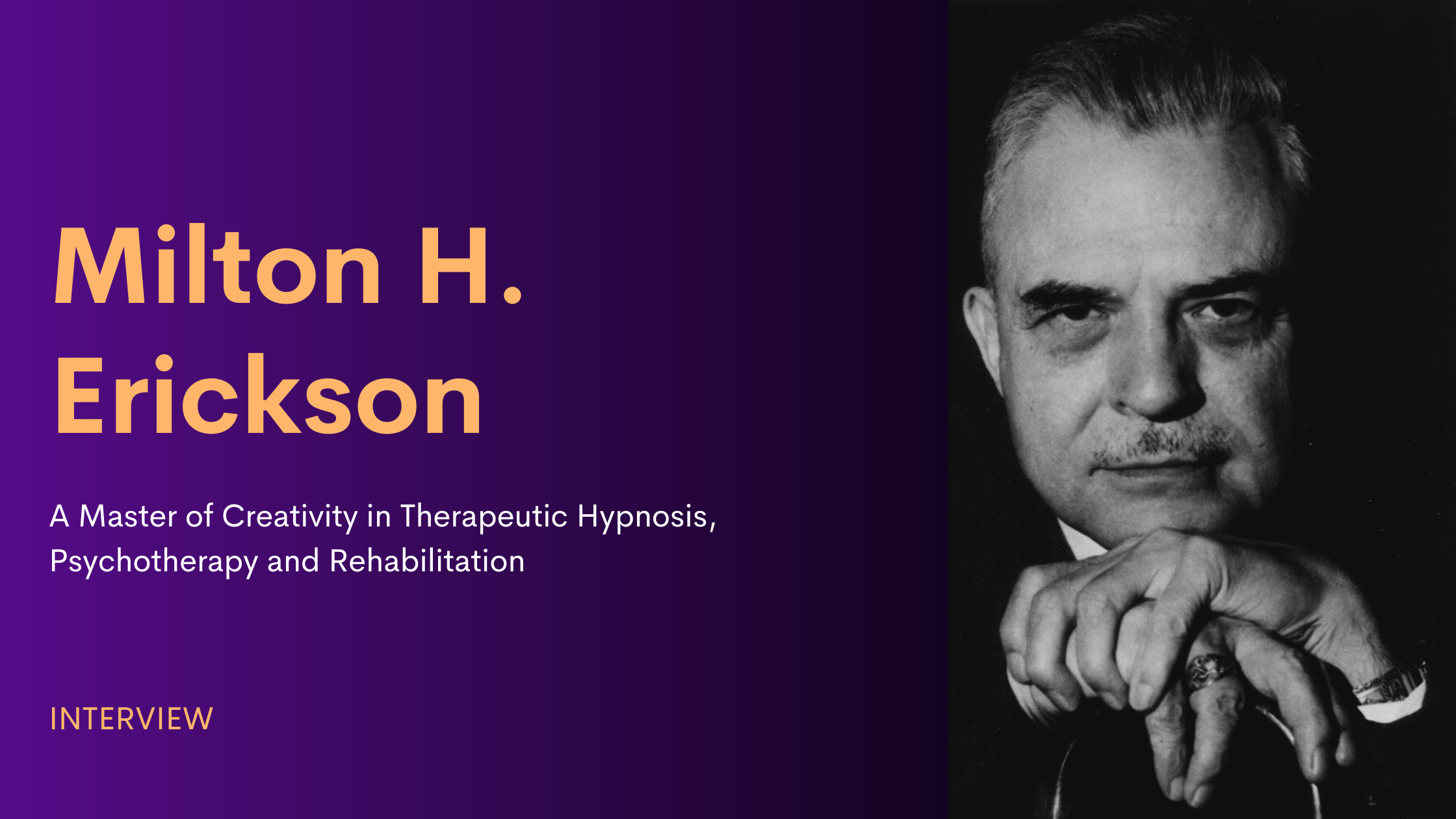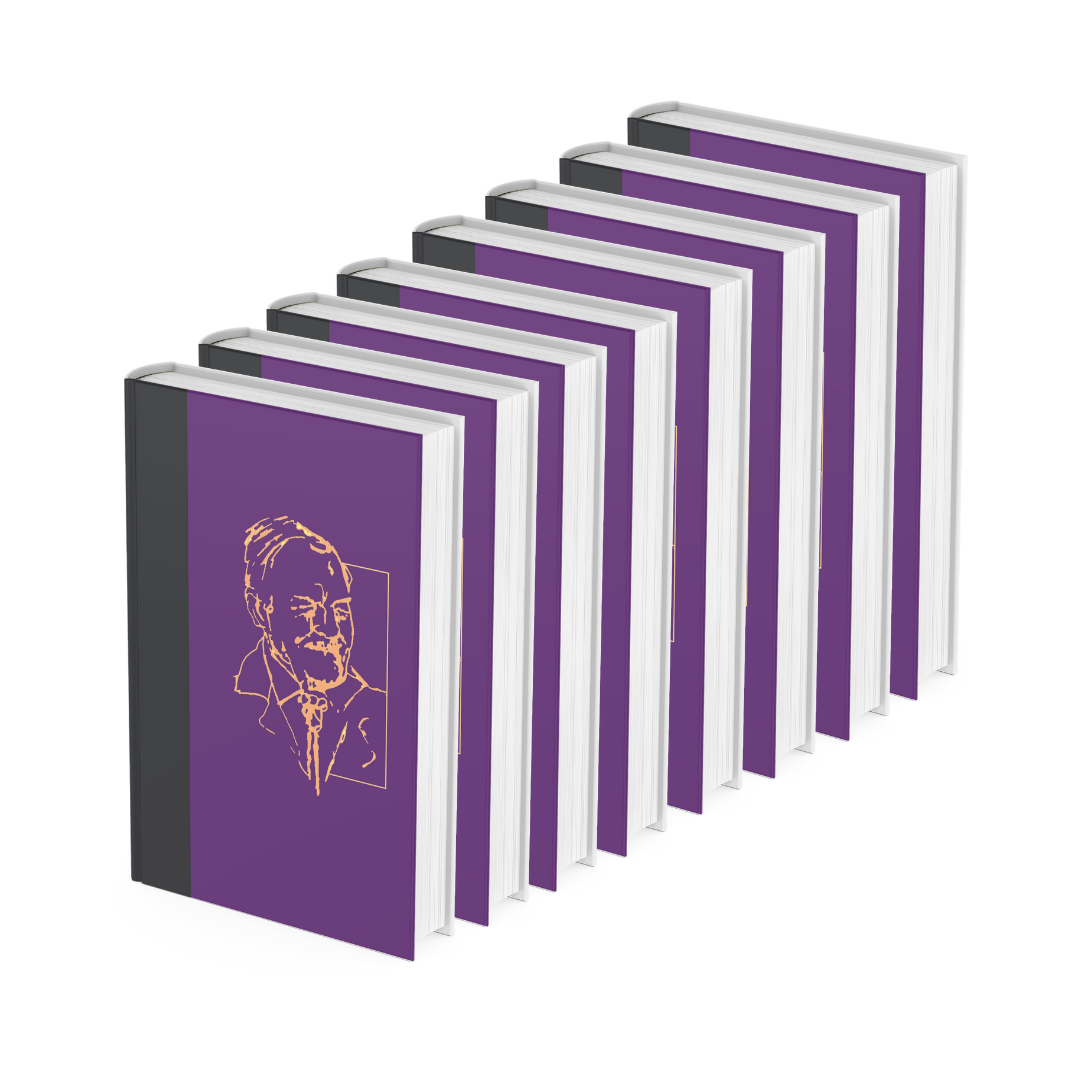Milton H. Erickson
A Master of Creativity in Therapeutic Hypnosis, Psychotherapy and Rehabilitation
A Dialogue with Ernest Rossi Ph.D.
By Kathryn Lane Rossi, Ph.D. and Roxanna Erickson-Klein Ph.D
Estimated reading time: 7 minutes, 56 seconds.
How did he do it?
How did he develop his artistry?
How did his work unfold as seemingly simplistic? Or was it, really? What was behind the thinking of this great man?
What directions would he take if he were with us today, a generation after his passing?
Kathryn Rossi (K): I never met Milton H. Erickson in person but I feel I know him through his written words, audio recordings, videotapes, family, and students. It took more than a decade for all three of us (Ernest Rossi, Roxanna Erickson Klein, and myself) to reacquire the rights to republish the seminal books of Milton H. Erickson. That journey contained, for all of us, every possible emotion from great despair to ecstatic elation when we succeeded.
The steadfast belief we three shared is that it is imperative that the cornerstone of Milton H. Erickson’s original papers, seminars, and workshops, and textbooks are co-written with Ernest Rossi should be available for everyone at a reasonable price. This is why we have initially created three updated Neuroscience Edition CD’s that contain 15 books in a re-edited format, along with many papers never before published by Erickson. What makes this a “Neuroscience Edition” are a number of recent papers by Ernest that provide a current neuroscience perspective on many of Erickson’s essential themes throughout these three CDs. It is hard to imagine a better format for learning about Erickson since the three CDs include videos and audios of Erickson for an intimate understanding of the profound and timeless master that he was. Ernest, can you give us some reflections on your work with Erickson and how you have developed it more recently?
Ernest Rossi (E): Oh Gosh, I thought no one would ever ask! I was in despair when he left us back in December 1980. I felt I had failed to grasp the wholeness that was Milton Erickson, and now it was too late. I had but one clue that was an important fact, but I did not really understand why. Erickson always had unusually long psychotherapy sessions, about 90 – 120 minutes in contrast to the usual fifty-minute hour of psychoanalysis. I found an important scientific clue where chronobiologists were reporting that there was a natural ultradian psychobiological rhythm of 90 – 120 minutes throughout the 24-hour circadian cycles. When I asked Erickson if he had ever heard of the Ultradian Basic Rest- Activity Cycle (BRAC), he replied that he had not. However, tears came to our eyes when I showed him how the list of typical trance-readiness signals and indicators of trance development that we summarized in chapter nine of our first book, Hypnotic Realities, was almost identical with the behavioral indicators of the 10-20 minute rest phase of the Ultradian Basic Rest-Activity Cycle. This was our first clue that Erickson’s careful observation of the “minimal cues” of a patient’s behavior could pay off in facilitating empathy, rapport, and mind-body healing. By inducing quiet, traditional type hypnosis during the low phase of the BRAC, for example, Erickson could be facilitating the rest-healing part of the ultradian cycle. When Erickson used a more active approach to hypnosis, such as hand levitation, he could be focusing the patient’s high-performance side of their natural ultradian rhythm, thereby optimizing their efficacy when high energy and concentration were required in active inner or outer work, or play.
Roxanna Erickson-Klein (R): Oh, so that is why you wrote all those papers on mind and body rhythms that were supposed to be related to hypnosis in the 1980s. You actually got that idea originally from Erickson! Many people could not understand why you seemed to be going off on a wild goose chase at the time.
E: Yeah! I really wasn’t being so original. I was only hanging on for dear life to the only scientific clue I had about the essential neuro-psycho-physiological basis of your father’s work. So I published the first edition of The Psychobiology of Mind-Body Healing in 1986 to explore mind-body communication, and how to facilitate it, with Erickson’s indirect suggestions and what I called “Basic Accessing Questions,” and so forth. But why was the 90 – 120 minute BRAC important? It took me seven more years before I was able to understand the significance of the evolving neuroscience of genomics. By 1993 I was able to publish the second edition of The Psychobiology of Mind-Body Healing. In that book I was able to assemble the scientific evidence to establish that it requires about 90 – 120 minutes for genes to respond to important environmental events, like trauma and stress. The genes do this by producing the proteins that are the basic building blocks generating hormones, growth factors, immune system factors, neurotransmitters, etc. as an adequate healing response to the trauma and stress that initiated the gene expression/protein cycle. This is where I was perhaps a bit original: I realized that the gene expression/protein synthesis cycle was the ultimate source of mind-body rhythms that Erickson may have been utilizing in his fantastic success with psychosomatic problems and rehabilitation.
K: This all seems so obvious now. But why don’t I see or hear anyone else besides you getting excited and jumping up and down about this “essence” of mind-body healing? We always read about psychoneuroimmunology and the deleterious effects of post-traumatic stress disorders, but no one except us true believers seems to realize that Erickson’s therapeutic hypnosis can deal with these problems at the fundamental molecular genomic level.
E: Aye! There’s the rub! How come the reporters from The New York Times who covered our recent Evolution of Psychotherapy Conference have completely missed this really new perspective in the article they published on The Future of Psychotherapy? How many researchers do you know in the hypnosis communities who are doing research in this area? Very few, indeed, are working on the genomic level!
R: It’s as if the current generation of academic and laboratory researchers in therapeutic hypnosis and psychotherapy simply don’t even believe in the possibility.
E: Yes, Exactly! That’s the problem – and the current generation of researchers in hypnosis does not have very specialized laboratory skills in genomics to do such work. That’s why I published The Psychobiology of Gene Expression in 2002; A Dialogue with Our Genes in 2004; Cinq Essais de psychogénomique – Exploration d’une nouvelle démarche scientifique axée sur l’interaction entre l’esprit et la molécule [Five essays on psychosocial genomics: Exploration of a new scientific approach to the interaction between mind and molecule] in 2005; and now our three sets of CDs on the Neuroscience Edition of Erickson’s work.
R: It may seem a bit overwhelming, but I hope we will get all of it published as an evolving series of books continually updating the scientific aspects over the next few years. We also have a great deal of previously unpublished material in the Ericksonian archives. Books are very expensive to publish! Who do you suppose could help us with the funding of such a long-range project?
K: We should ask Jeff Zeig – he always seems to know about these things. On the other hand, perhaps we should welcome any readers of this newsletter who have an interest and possible experience in fundraising to help our nonprofit Milton H. Erickson Foundation in this long-term, humanitarian publication effort.
R: Well, as of this moment, you have helped us all come a long way with this new understanding, Ernie, since my father told me the story about when you asked him that provocative question during one of his workshops in the early 1970s before you began to study with him. You were in the audience and asked him something like: “What is the relationship between hypnosis and consciousness, and can hypnosis help us investigate consciousness?”
E: I have only a vague memory of that. It seems like a lifetime ago. Of course, I now believe that consciousness is a novelty-seeking modality. We can facilitate consciousness with implicit processing heuristics via therapeutic hypnosis. Therapeutic hypnosis can activate the gene expression/protein synthesis cycle and brain plasticity to facilitate problem-solving, mind-body healing, and rehabilitation. Art, beauty, and truth are also numinous (fascinating, mysterious, and tremendous) experiences that can likewise activate the gene expression/brain plasticity cycle, that facilitates and encodes yet another creative transition in consciousness.
K: But wait – you forgot the part about mirror neurons!
E: Oh, yeah! My role in this reflections article was to casually mention that Kathryn and I have just had our first paper together accepted for publication by
The American Journal of Clinical Hypnosis on “The Neuroscience of Observing Consciousness & Mirror Neurons in Therapeutic Hypnosis.” In the article we present research by scientists that suggests how our mirror neurons can be tickled by psychological experiences of novelty, enrichment, and exercise (physical and mental) so that they turn on their gene expression cycle and activate brain plasticity. This induced-plasticity can facilitate all sorts of good stuff like love, as in relationships, sexual bonding, family dynamics, etc., as well as art, beauty, truth, and consciousness itself.
This is the awesome perspective that I now believe is Milton H. Erickson’s most profound legacy to us. For the first time in human history we actually understand the types of psychological experiences that can facilitate the evolution of consciousness. This induced evolution can affect creativity, rehabilitation, and healing on all levels from mind to gene. We now have a new research paradigm and philosophy of a truly effective approach to psychotherapy and rehabilitation of which previous generations could only dream.
You may like…






